(This post was published on our previous blog on 5/15/2015.)
By Lauren Wallace, Former Graduate Student Intern (Simmons University)
[The following post has been republished to mark the 58th anniversary of the U.S. Postal Service’s five-digit ZIP Code system, which was instituted on July 1, 1963.]
We are pleased to announce that the H. Bentley Hahn Personal Papers collection is fully digitized and available on our website.
The digitization of the H. Bentley Hahn Personal Papers was part of my final capstone internship for my Masters degree in Library and Information Science and Archives Management at Simmons College. It was exciting, yet challenging, to apply the skills I had learned over the course of my degree. In digitizing this collection, what struck me was the simplicity of a program that we now take for granted and how it completely revolutionized the U.S. Postal Service. The story of the ZIP Code and of the Mr. ZIP marketing campaign provides insight into a rapidly-changing postal system. In working with H. Bentley Hahn’s papers, I discovered a small snapshot of history that I would have never seen otherwise and I am excited to be able to share it with others.
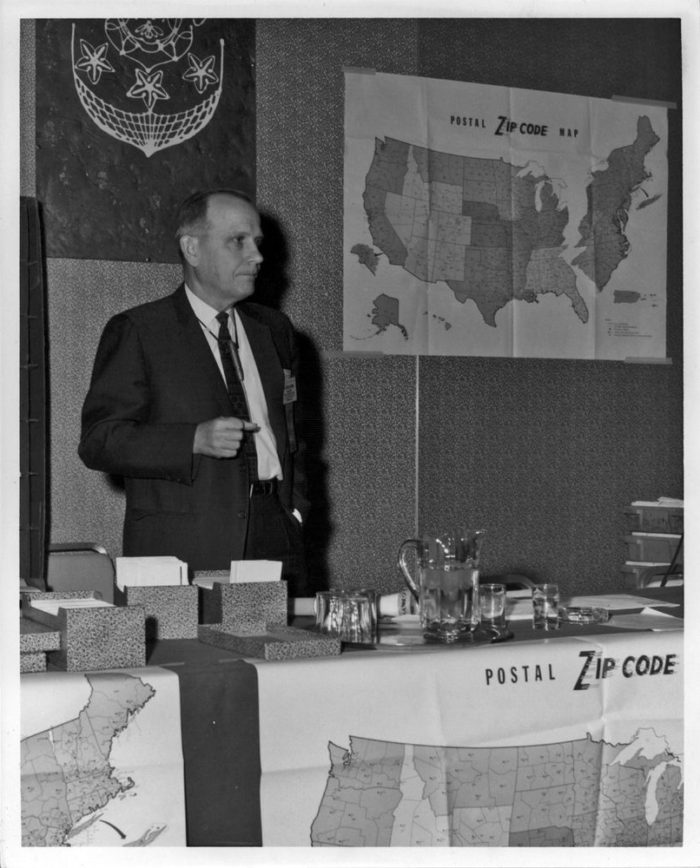
Henry Bentley Hahn, Sr. was born on March 14, 1910 in Beaumont, Jefferson Co., Texas and served in the United States Air Force from 1942-1946. Upon his return Hahn became a postal inspector for the United States Post Office Department. It was the work he performed in this position for which he is best remembered.
In 1961, the volume of magazine and circular mail bundles in the United States averaged 43 million pieces per week, with a total of about 30 billion pieces annually. [1] The U.S. Post Office was still dealing with the loss of many trained employees from World War II and did not have the necessary resources to increase the specialized training required to handle this amount of mail. With mass mail marketing campaigns and magazine circulation on the rise, the U.S. Post Office was searching for ways to manage the exponentially increasing load more effectively.
After spending six years evaluating the operations of the field postal service, Hahn submitted a report entitled, “Proposed Reorganization of the Field Postal Service” (1953) to the Inspector in Charge, C. C. Garner, as a solution to the developing mail problem. This proposal would later contribute to the, “Zone Improvement Plan,” establishing the five-digit ZIP Code.[2] The first three digits of the ZIP code were invented by Robert A. Moon, who came up with a system for dividing the country into approximately 900 geographical areas. Eventually, H. Bentley Hahn contributed the fourth and fifth digits, which added further precision to geographic locales. The five-digit ZIP code plan was announced to the public on November 28, 1962 and implemented on July 1, 1963.
(Below) The first three slides from Hahn’s presentation and the transcript to “Technical Explanation of Post Office Department’s Proposed ‘Zip Code’ Program for the Postal System.” The presentation was delivered following the official announcement by the Postmaster General in November 1962. View the rest of the presentation slides, here. View the rest of the speech here.

Series of ZIP Code marketing presentation slides, November 1962. View the rest of folder here. Please credit: United States. Post Office Department. H. Bentley Hahn Personal Papers. John F. Kennedy Presidential Library and Museum, Boston.
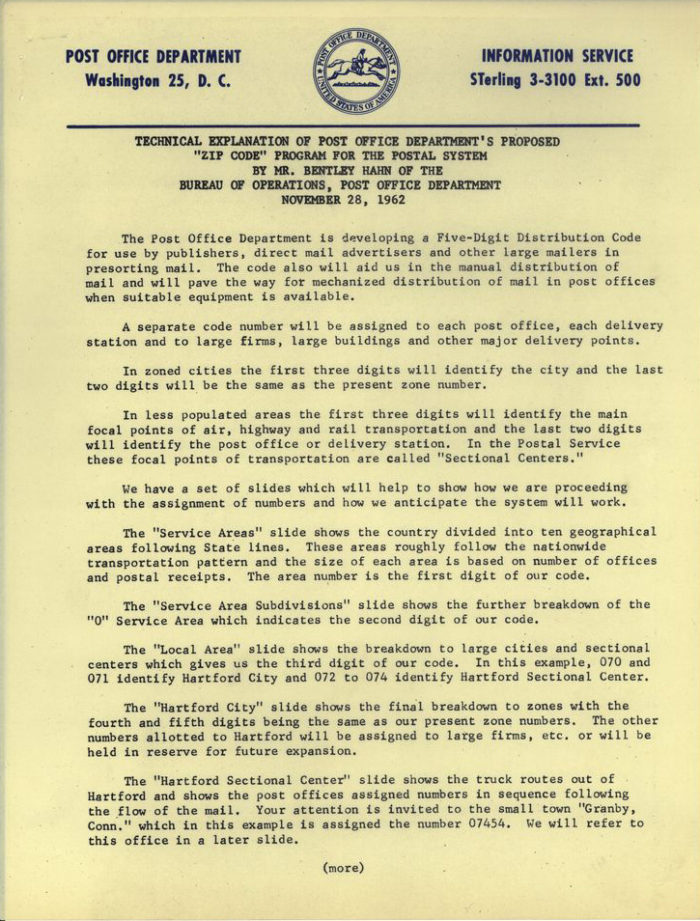
The ZIP Code plan created a hierarchy based on national region, sub-region, post office, and delivery station.[3] Using the John F. Kennedy Presidential Library ZIP Code as an example (02125), the region is 0, sub-region is 2, post office is 1, and delivery station is 25. As found in trial areas, the new ZIP Code eased the sorting process by removing delivery steps and effectively utilizing electronic data processing equipment in the pre-sorting of mail. This approach ultimately led to a decrease in cost and delivery time.[4]

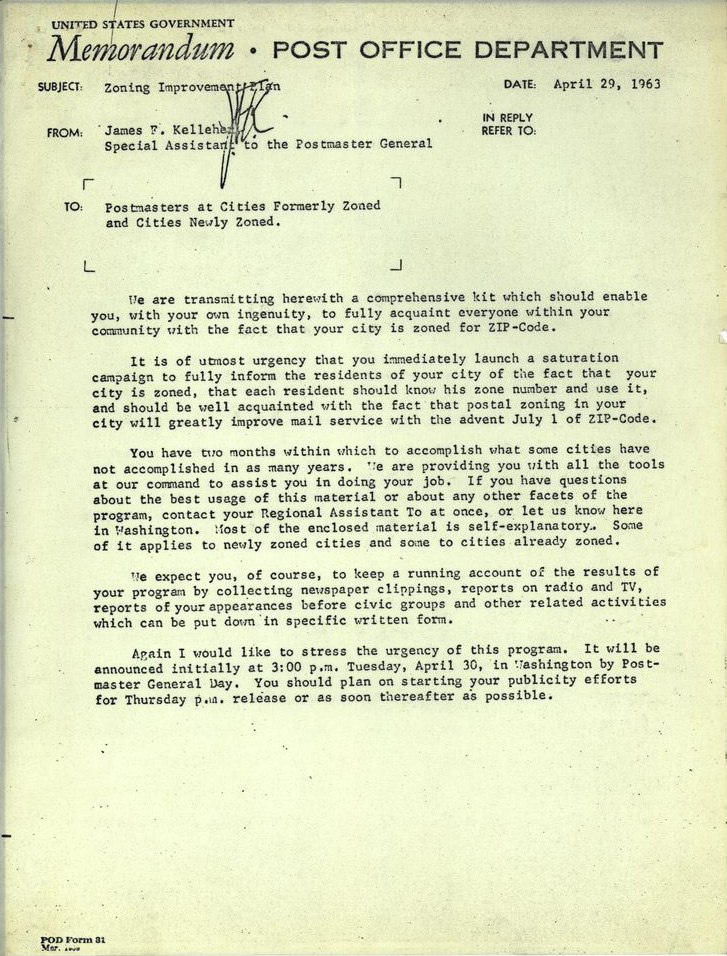
In order to implement the new program successfully, the U.S. Post Office set out to create an effective, mass marketing campaign. However, due to the limited time frame between the program’s official public announcement and its expected implementation, a majority of the campaign efforts was left to the regional and local post offices, some of which only received two months notification prior to the July 1,1963 implementation date.
To accomplish this ambitious goal, regional and local post offices were utilized to saturate the community with information. The U.S. Post Office mandated that the campaign inform residents on how to use the ZIP Code, when to start, and why the change was necessary.[5] With a “tremendous job to do and a very short time in which to do it,” local post offices were entrusted with promoting and informing their residents in a very short period of time.[6]
Shortly afterward, reports of success started to come in from the regional postmasters, with minor issues to be addressed. Despite these issues, the ZIP Code was considered by the U.S. Post Office to be a huge success. Some counties saved as much as $10,000 per year, speeding up delivery by up to 48 hours in some locations and easing the process of sorting without a reduction in staff or closing local post offices.[7] Below is a sampling of the reports sent in by postmasters shortly after the implementation of the ZIP Code:

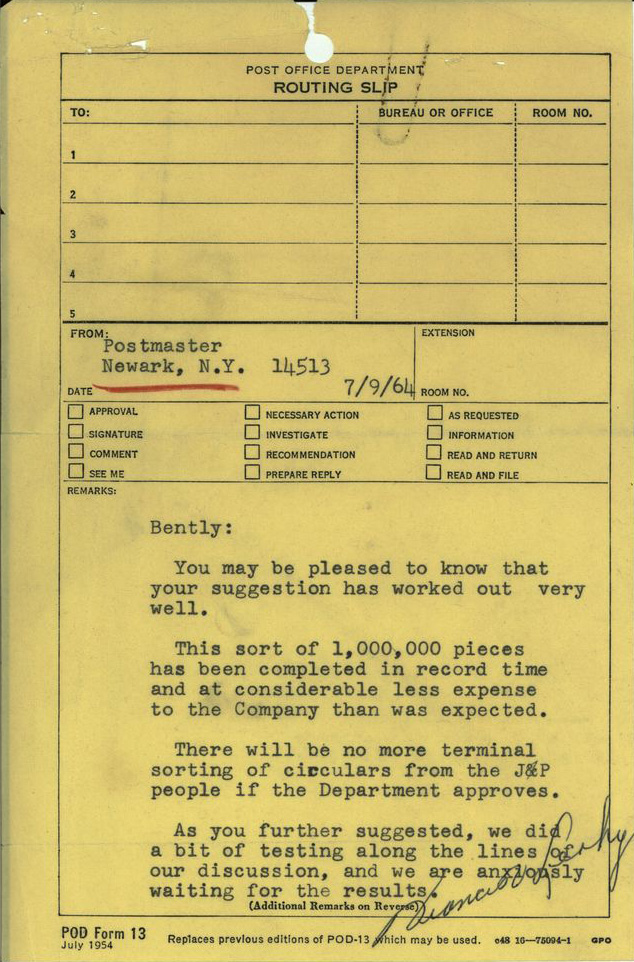
While there were challenges to work through with the new system, postmasters throughout the region reported overall success in the implementation of the ZIP Code system. Almost 52 years later, the system remains in effect and has continued to adapt to many changes, including advancements in technology.

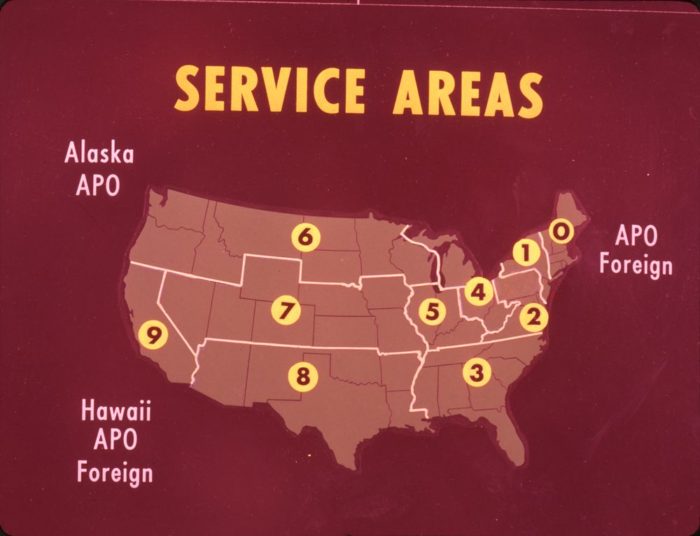
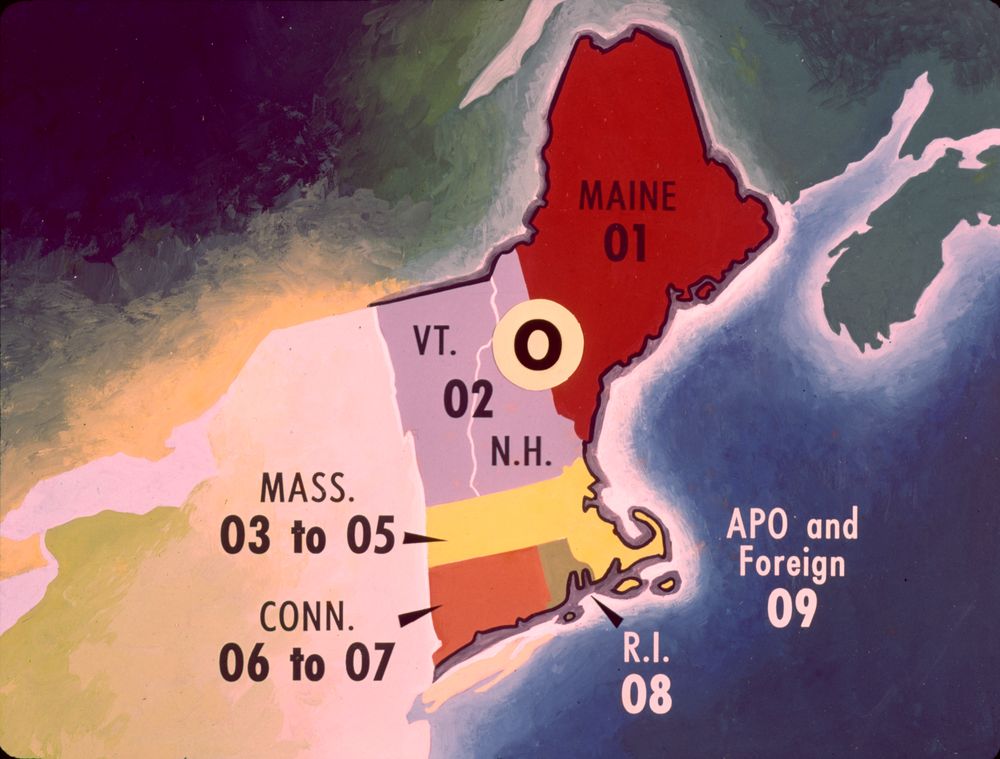
[…] more about the ZIP code implementation and check out the fully digitized H. Bentley Hahn Personal Papers now available to view from the […]
Very interesting!
Was the USA the first country to use Zip Codes? Because other countries use zip codes too. If his idea was adopted by other countries it means that he influenced the way mail is distributed across the world.
[…] more about the ZIP code implementation and check out the fully digitized H. Bentley Hahn Personal Papers now available to view from the […]
[…] more about the ZIP code implementation and check out the fully digitized H. Bentley Hahn Personal Papers now available to view from the […]
[…] more about the ZIP code implementation and check out the fully digitized H. Bentley Hahn Personal Papers now available to view from the […]
Henry Bentley Hahn, Sr. is actually my great-grandfather. Thank you so much for honoring his legacy.
Thank you for letting us know! We’re delighted that you found this post on your great-grandfather!
Henry Bentley Hahn was my great-uncle. I am named after him. He presented his invention at my first grade show and tell.
Well, that is an awesome piece of information. I imagine you were quite proud of your great-uncle. Do you mind sharing the location of this presentation? The ZIP code will do! 🙂
Robert A. Moon was my great-grandfather as well, I am glad our ancestors worked to where we have a great system put into place!